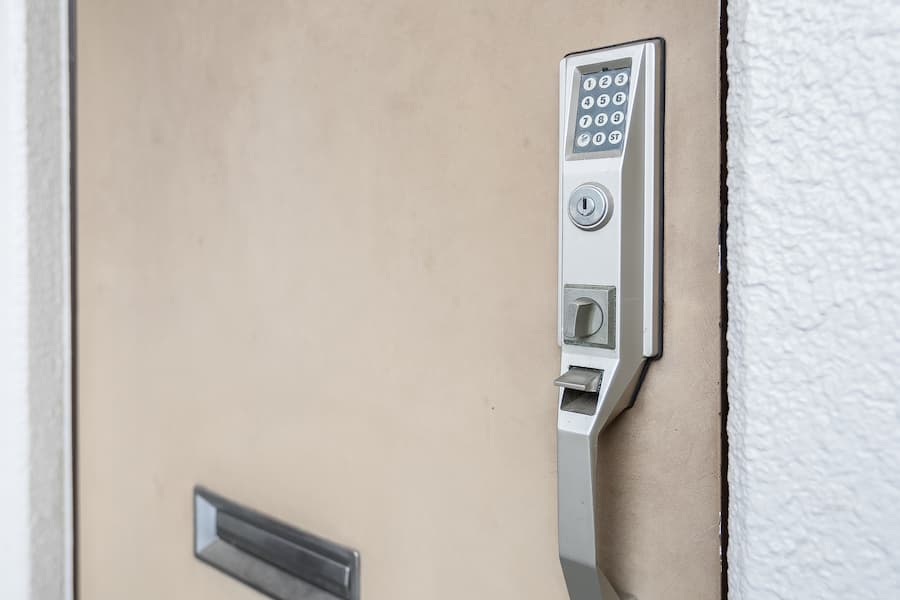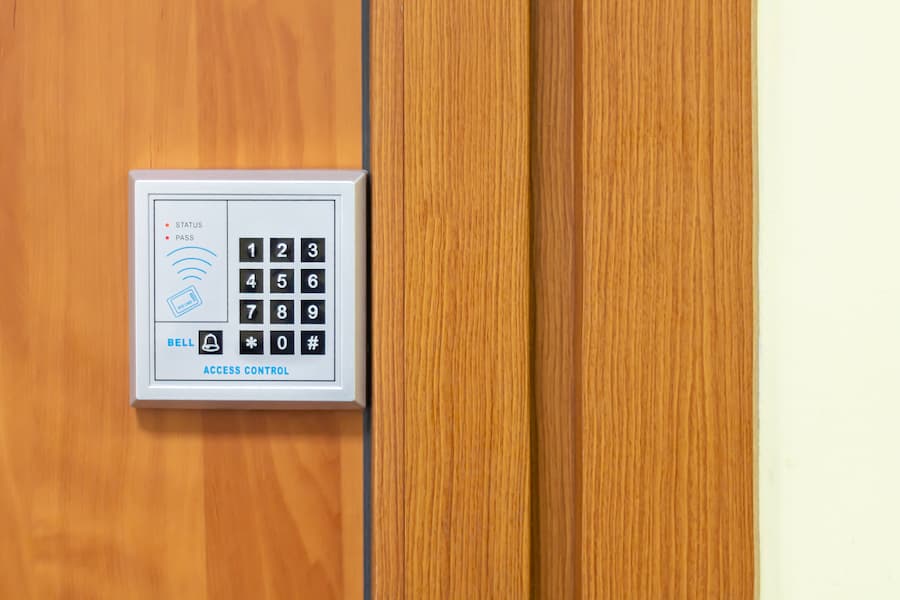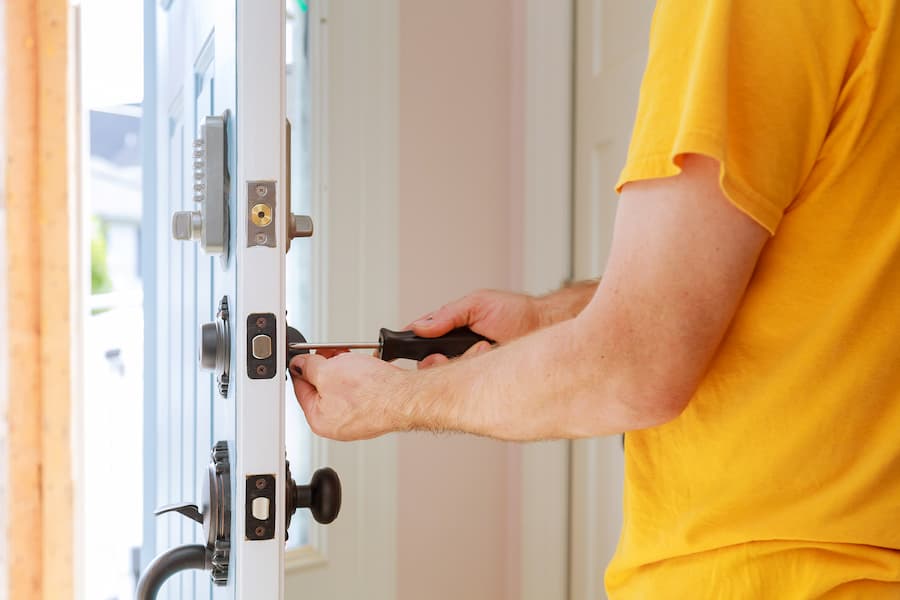
‘How do you install a keypad lock?’ is a question that residential and commercial building owners ask often.
The main purpose behind having a lock is to ensure your facility or home is secure.
When you are considering a keypad lock installation, you will want accurate information on the benefits of keypad locks and how they are installed.
What are keypad locks and how do they work?
Keypad systems are a great way to go keyless while safeguarding your property. These systems operate typically with access control systems. Instead of using a key, the keypad lock system features a numerical code.
Users punch in the numerical code to enter the property or facility. They punch the code on a numerical pad that looks like a basic calculator. When the user puts in the correct code, the deadbolt or door lock releases.
In some mechanisms, electrical current or batteries are needed for the door to unlock. Some keypad locks also have an extra security feature where the door is locked for a defined period of time after several failed attempts on entering the code.
Apart from the convenience of not having to carry a key around, the keypad systems make the building or home more secure.
They have a different hardware design that makes it impossible for thieves to pick them, unlike conventional locks. Not having to carry a key around also means that there are no hassles of keeping track of spares and copies or changing the locks when you lose a key.

How do you install a keypad lock?
Now that you know about the benefits of keypad systems, you can now learn the quick steps of installing a keypad lock:
- Step 1: Take the old lock out
Unscrew the bolts on the door’s inside. You will also need to unscrew the screws while keeping the deadbolt face on the edge of the door as well. Remove the deadbolt and the lock cylinder before pulling out the old deadbolt. Ensure the diameter of the circular hole in the door edge and the lock bore are appropriate. - Step 2: Install the deadbolt
You can use the screwdriver to extend the plunger fully. Slide the new deadbolt and ensure the “D” shaped hole of the deadbolt is in the center of the hole in the door. The bolt face has to be flush with the edge of the door. - Step 3: Attach the keypad lock
You will need to attach the mounting plate of the keypad lock on the inside of the door to the touchpad located on the outer surface of the door. Place the assembly of the lock on the mounting plate. The assembly can consist of a battery pack, electric motor, controls and data wire. - Step 4: Put the cover of the assembly in place and secure it using screws.
- Step 5: Test and adjust the keypad lock

Benefits of calling a locksmith for keypad lock installation
Although the steps to installing a keypad lock look simple, there are many complexities involved. The deadbolt may not extend and retract when the door is closed and open, which can indicate misalignment of some component in the system.
The dimensions of your door may not match with the new keypad system you have purchased. Besides, in your busy schedule, you may just not have enough time to figure out how to remove your old deadbolt and fit the new keyless system.
There are many benefits to letting Speedy Locksmith, your trusted local emergency locksmith, handle the keypad lock installation and maintenance. With years of experience, trained technicians can install the system in quick time, saving you the hassles of reading the instructions and worrying about misalignment.
Calling Speedy Locksmith also means you no longer have to ask ‘how do you install a keypad lock?’.
Mobile Locksmith Service Areas
- Mobile Locksmith Merriam
- Mobile Locksmith, Prairie Village
- Mobile Locksmith, Olathe
- Mobile Locksmith, Leawood, Kansas
- Mobile Locksmith, Overland Park
- Mobile Locksmith, Lenexa
- Mobile Locksmith, Shawnee
- Mobile Locksmith, Mission
- Mobile Locksmith, Kansas City, KS
- Mobile Locksmith, Kansas City, Missouri
